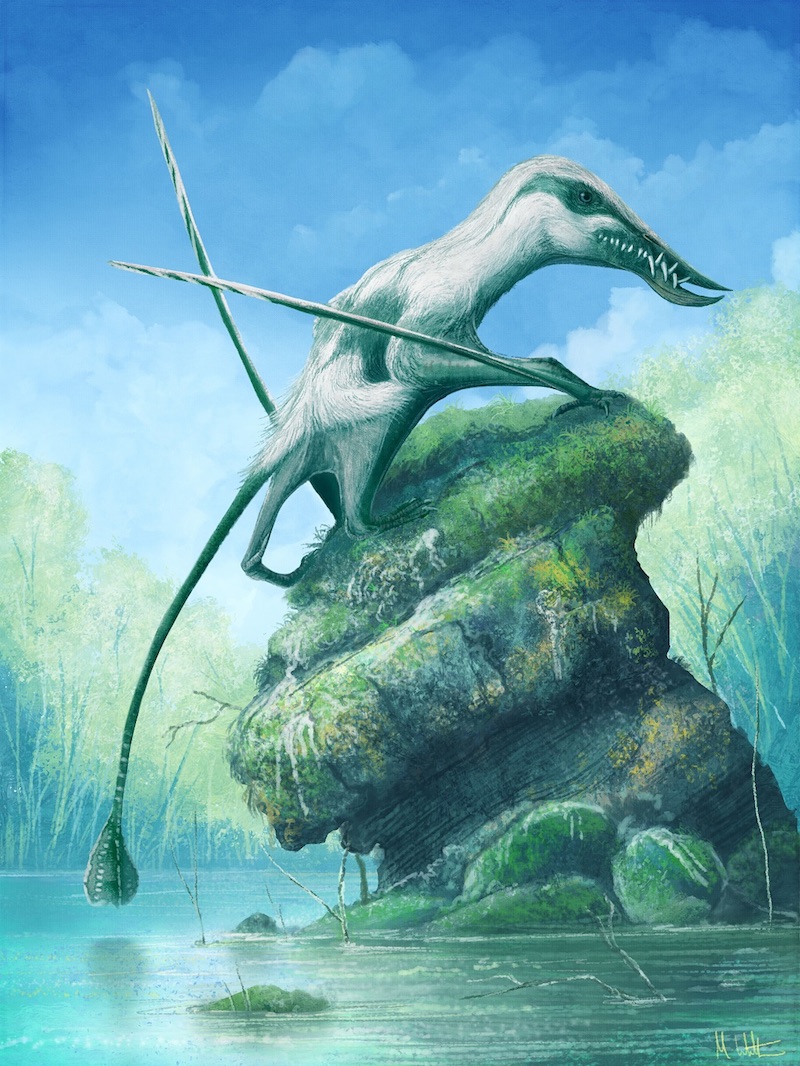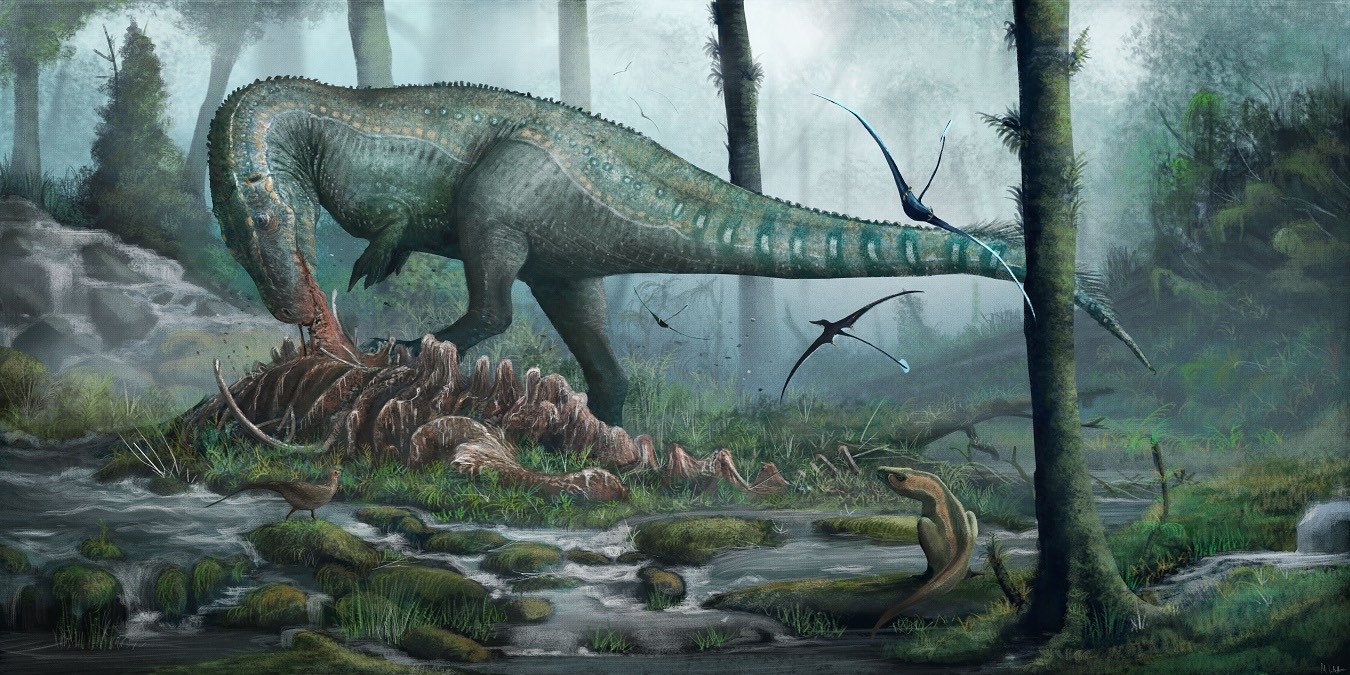Rare Flying Reptile with Mouthful of Fangs Trolled Jurassic Skies

As if a spear-like beak and huge leathery wings weren't freaky enough, a newly discovered species of Jurassic pterosaur also had a mouthful of fangs.
Klobiodon rochei was a flying reptile that lived around 166 million years ago in what is now south-central England. Researchers discovered the new species among bone fragments taken from a layer of slate about 10 miles (16 kilometers) from the city of Oxford.
"Klobiodon has been known to us for centuries, archived in a museum drawer and seen by dozens or hundreds of scientists, but its significance has been overlooked because it's been confused with another species since the 1800s," paleontologist Michael O'Sullivan of the University of Portsmouth, said in a statement. O'Sullivan and his colleagues discovered that the bones belonged to a new species while combing through more than 200 specimens from the English slate layer in order to fit them all into a family tree. [Photos of Pterosaurs: Flight in the Age of Dinosaurs]
Toothy cage
Klobiodon means "cage tooth," a moniker chosen because the new species had inch-long (26 millimeters) teeth that locked together like the bars of a cage. The pterosaur probably hunted fish and squid, which would have had a hard time escaping from this fanged trap, O'Sullivan said. Few known pterosaur species from the Middle Jurassic had teeth, according to the researchers, so the very dramatic fangs on K. rochei were an intriguing find.
The species name rochei was chosen in honor of comic book artist Nick Roche, whose comics' work includes particularly scientifically accurate portrayals of extinct beasts, O'Sullivan and his colleagues wrote in November in the journal Acta Palaeontologica Polonica.
The pterosaur was a large animal, with a wingspan of around 6.5 feet (2 meters), the researchers reported.
Ancient world

When K. rochei was alive, the climate was much warmer, and today's Great Britain was a series of tropical islands, O'Sullivan said. The United Kingdom thus boasts many marine reptile and ammonite fossils, but researchers have largely overlooked its flying reptile specimens, he said. Most of the bones there are fragmentary, including those of K. rochei. Luckily, the reptile's lower jawbone was preserved, and its unique teeth allowed the researchers to identify it as a new species.
Sign up for the Live Science daily newsletter now
Get the world’s most fascinating discoveries delivered straight to your inbox.
K. rochei would have trolled the same region as one of the most famous dinosaur species found in Great Britain, the fearsome Megalosaurus. These large theropod dinosaurs looked a bit like a T. rex. A femur from Megalosaurus was the first dinosaur bone ever illustrated in a scientific publication, according to the Oxford University Museum of Natural History. Naturalist Robert Plot drew the femur in his 1677 treatise on the natural history of Oxfordshire, misidentifying it as the bone of a giant human.
- Images: These Downy Dinosaurs Sported Feathers
- In Images: Digging Up a Swimming Dinosaur Called Spinosaurus
- Photos: See the Armored Dinosaur Named for Zuul from 'Ghostbusters'
Originally published on Live Science.

Stephanie Pappas is a contributing writer for Live Science, covering topics ranging from geoscience to archaeology to the human brain and behavior. She was previously a senior writer for Live Science but is now a freelancer based in Denver, Colorado, and regularly contributes to Scientific American and The Monitor, the monthly magazine of the American Psychological Association. Stephanie received a bachelor's degree in psychology from the University of South Carolina and a graduate certificate in science communication from the University of California, Santa Cruz.









